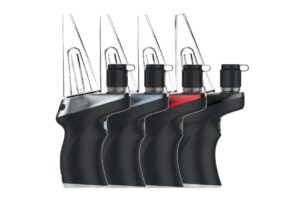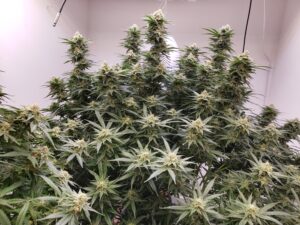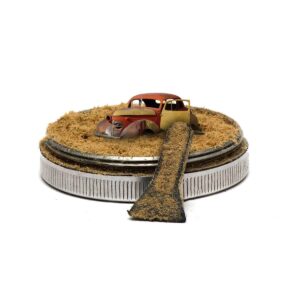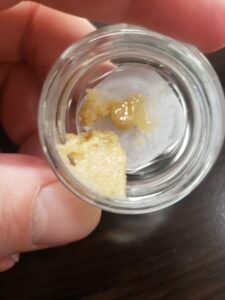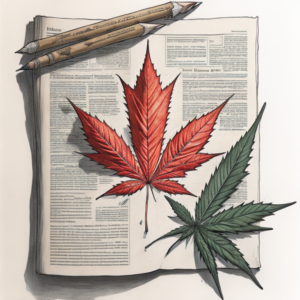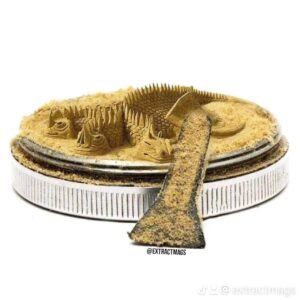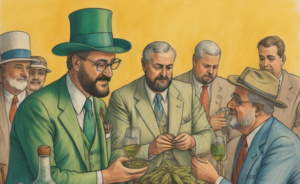Bioeconomy is a term featuring regularly in both policy debates and academic research since the turn of the millennium. It has emerged as a concept offering a solution to several serious problems facing the contemporary human world.
Bioeconomy is a loaded term studied in different disciplines. Its meaning also changes as per the context of its usage. To understand how hemp is an important bioeconomy item, it is first necessary to understand the concept of bioeconomy.
What Does Bioeconomy Mean?
In a 2016 article, a multidisciplinary team of scholars presents a conceptual explanation of the term bioeconomy. Their basis is a systematic review and meta-analysis of literature published between 2005 and 2014. They have identified three different understandings of the term.
Bioeconomy as Biotechnology
One school of scholars understands bioeconomy as biotechnology. Their focus is on innovating new forms of technologies less harmful to the environment. Creating energy from waste products is a typical example.
These scholars understand bioeconomy as the application and commercialization of biotechnologies in different segments of the economy. Their focus is as much on research and innovation, as on commercialization of newly discovered biotechnologies.
Bioeconomy as Bioresource
The bioresource view of bioeconomy also emphasizes research and development. But their focus is on biological raw materials rather than on technologies. For them, bioeconomy is the creation of new value chains through focused research on natural sectors. Agriculture, bioenergy, forestry, and the marine sector are their typical examples.
Bioeconomy as Bioecology
This is a vision propagated by environmental scientists and activists alike. They understand bioeconomy as an economic system that is ecology-friendly. They emphasize economic processes that facilitate social inclusion and environmental sustainability.
This vision stresses the preservation of forests and biodiversity, and similar other factors to arrest the process of ecological imbalance. Climate change and global warming are the main concerns of this group of academics and activists.
Is Hemp a Bioeconomy Item?
To explore the extent to which hemp is a bioeconomy item, we need to analyze the utilities of hemp from all these three angles. It is important to check the extent to which hemp as a natural raw material is amenable to new discoveries in biotechnology.
It is equally significant to examine the commercial viability of new hemp-based products and technologies. Only that can lead to the creation of new value chains. Finally, it is necessary to probe the extent to which research and development of hemp-based products and technologies are beneficial for the environment.
About Hemp
Hemp is not a new discovery. This plant has been in human use since eight to ten thousand years ago. However, it has regained currency only in recent years. It had been criminalized in many countries across the globe for the greater part of the 20th century.
Banning hemp production was an act of human omission or commission or a combination of both. Hemp and narcotic marijuana belong to the same plant species: Cannabis Sativa L. However, the big difference between the two is in the presence of tetrahydrocannabinol.
Better known as THC, this is a psychoactive substance present in high concentration levels in drug cannabis or marijuana. THC presence in marijuana varies between 7.5 and 10 percent or more. That is why marijuana can get us high.
THC presence in hemp is limited to 0.3% or less. It is the non-drug variety of cannabis. Obliterating this critical difference had caused the criminalization of hemp. Since the 1990s, different countries started realizing the inherent folly of the decision.
The process of declaring hemp to be legal again began since the late 1990s. One of the latest developments is the decriminalization of hemp in the USA. The Agriculture Improvement Act of 2016, better known as the Farm Bill 2018, has legalized hemp federally.
Image source
Hemp Fits the Bill for All 3 Visions of Bioeconomy
Hemp is an exceptionally versatile plant suitable as a bioeconomy item, whichever perspective we consider it from. Hemp cultivation has several favorable impacts on the environment. Increased use of hemp can reduce the adverse environmental effects of many other industries also.
Construction, fuel, paper, plastic, and textile are some of the most significant industries that can benefit from hemp. Ecologists and environmental activists champion hemp cultivation and increased usage of hemp from this bioecology angle.
Hemp is also one of the most easily renewable sources of biofuel. It can positively impact agriculture, forestry, and marine life. Increasing hemp cultivation and focused research and development on hemp as a natural resource can generate new value chains in the industries mentioned. That fits the bioeconomy perspective.
However, utilizing hemp for its fullest potential needs targeted research. That is especially significant to make hemp-based products commercially viable. That is where biotechnology comes in.
Hemp is, thus, clearly a bioeconomy item that holds promises for a more ecology-focused economy for the entire planet. Thankfully, many countries of the world have finally realized this tremendous potential of hemp. Several bioeconomy projects are focusing specifically on this plant.
Bioeconomy: How Hemp Fits In
A recent article explains why enhancing the bioenergy cropping system (BCS) is essential for a socially inclusive and ecologically reliable bioeconomy. BCS implies the cultivation of plants for producing biomass. Substantial increase in biomass production is necessary for both bioenergy and other products.
BCS needs to keep in focus the following:
- BCS must include only plants that are ecology-friendly. They must contribute to biodiversity preservation, soil conservation, and reverse deforestation and greenhouse gas emissions.
- BCS should focus on plants suitable for growing on marginal land so that there is no conflict with the cultivation of food crops.
- These plants should be sturdy enough to withstand the effects of climate change and global warming.
- BCS must focus on rural development and the sustenance of small family farmers. At the global level, they manage 80% of agricultural land and natural resources.
- BCS needs to focus on plants that have multifaceted usability to facilitate a gradual shift to bioeconomy from the current exploitative economic system. This system has proven to be detrimental to both the environment and human society.
Hemp scores are big in each of these BCS focal areas.
- Framers have traditionally used hemp as a rotation crop. It revitalizes the soil and is good in absorbing harmful elements from the soil. Also, hemp has a growth cycle of up to 16 weeks. That makes it ideal as a rotation crop.
- Hemp cultivation is good for food crop production, therefore. There is no potential conflict.
- Hemp can grow almost anywhere and in any climate. Desert aridity and extreme cold are the only two conditions unsuitable for hemp cultivation.
- Hemp is an extremely sturdy plant. It needs little care and almost no extra irrigation.
- Hemp is naturally resistant to pests. It requires no pesticides.
- The versatility of hemp makes it suitable for a wide range of items. Hemp is a source of food and medicine. It is a source of biofuel to bioplastic. It is possible to derive biodegradable building material, paper, and textiles from hemp. It can really yield almost anything.
- China is a leading example of how hemp cultivation can boost the rural economy.
Final Words
In the ultimate analysis, the development of hemp needs the political commitment of country heads. EU has already started several biomass production projects to facilitate a gradual shift towards sustainable bioeconomy. It is critical for the USA and other countries to follow suit.
Sources:
https://global.mongabay.com/news/bioenergy/2007/01/bioeconomy-at-work-hemp-industry.html
https://fas.org/sgp/crs/misc/RL32725.pdf
https://www.researchgate.net/publication/238095811_Sustainable_Development_Building_a_Case_for_Hemp





